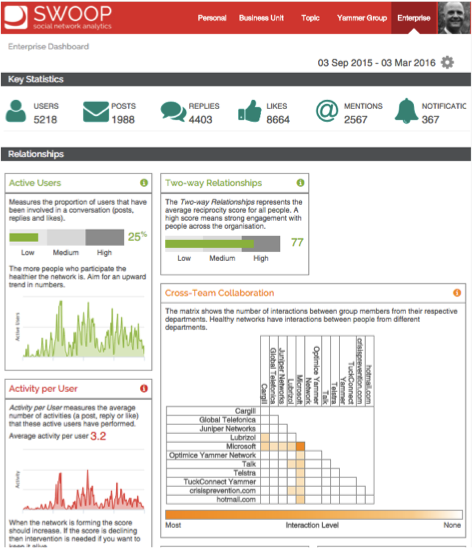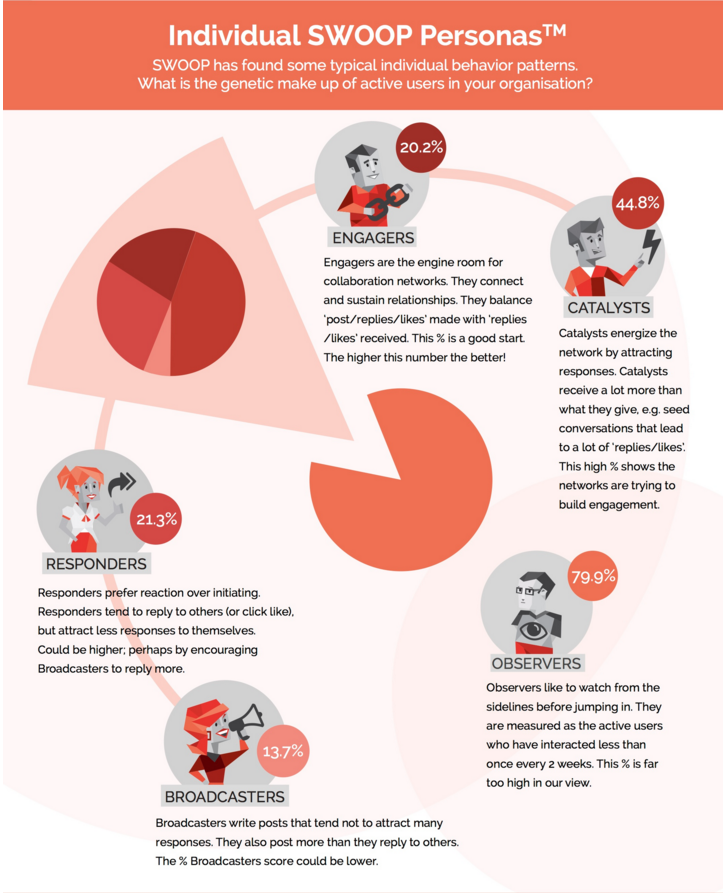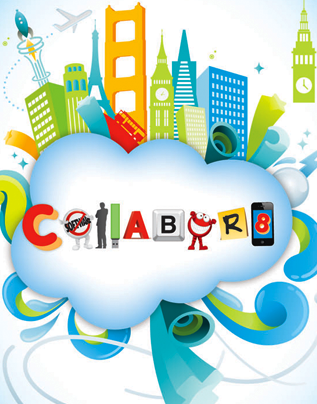I caught up this week with Cai Kjaer whom I’ve known via the social web as one of the founders of Optimice. We used Optimice at Change Agents Worldwide to map our core competencies within the network. I’ve always been a big fan of Social Network Analysis (SNA), and feel we are leaving a lot of actionable information on the table when we don’t observe what is happening organically within our networks. As just one example, ESN strategists spend a lot of time identifying who might be a good candidate to advocate for working socially, but a lot of this work is anecdotal, and champions are identified via word-of-mouth. Software can do this fairly easily once you map the activity on the network.
 The Optimice team has launched an analytics tool, SWOOP, that may help large networks reveal intelligence that is not intuitive or otherwise obvious. The software platform is the result of over a decade’s worth of consulting mapping organizational networks. At present, the team is working with Yammer and Chatter networks, but they have plans to work with more large-scale ESNs.
The Optimice team has launched an analytics tool, SWOOP, that may help large networks reveal intelligence that is not intuitive or otherwise obvious. The software platform is the result of over a decade’s worth of consulting mapping organizational networks. At present, the team is working with Yammer and Chatter networks, but they have plans to work with more large-scale ESNs.
For large enterprises that view the ESN as the foundation for culture change, quality improvement, and innovation, it’s more or less a no-brainer to employ a tool like SWOOP. Some of the ESNs already have fairly sophisticated analytics, or at least used to, last time I checked. But Yammer, in particular, has experienced explosive growth now that it’s free with O365, and the analytics are really weak. Something like SWOOP has not been available to its large communities until now, AFAIK.

The good news around this software is there is a lot of interest in introducing the power of SNA to large enterprises, but there hasn’t been an easy way to do that without expensive, complicated consulting. With SWOOP, at a low price/seat investment, you can immediately start “listening” to what your network is telling you. The power of SNA becomes more attractive when you can start identifying how your network can save you time and money. It’s not just eye-candy, in other words. Kjaer likes to say, “Collaboration is a contact sport.” So true. When you can look at connections cross-organizationally, and see data that reflects the role individuals are playing within their groups, you have a guidepost, a key performance indicator of sorts. Moreover, the ESN starts to take advantage of the potential for “emergent” behaviors that got the original Enterprise 2.0 champions so excited. (Myself included.)
I will be watching this area with much interest. I’ve already got some ideas of how SWOOP can make a difference among some successful ESN customers already. If you want to give the platform a try, you can sign up for the company’s free benchmarking tool. I’d love to hear your progress.


